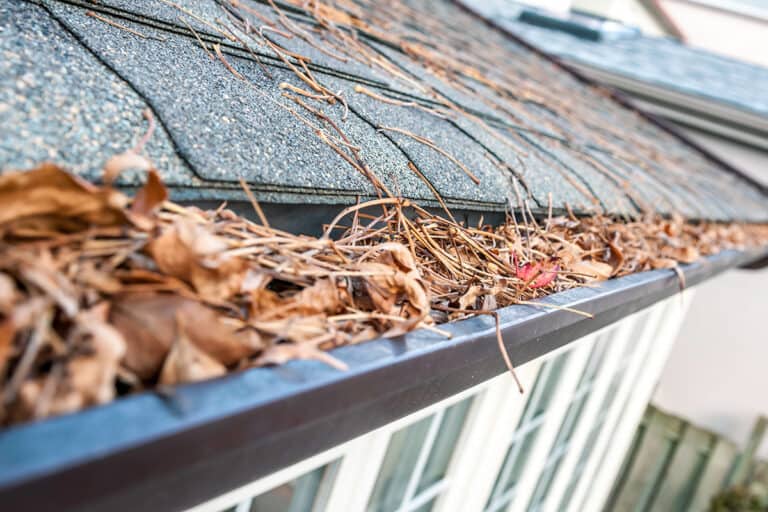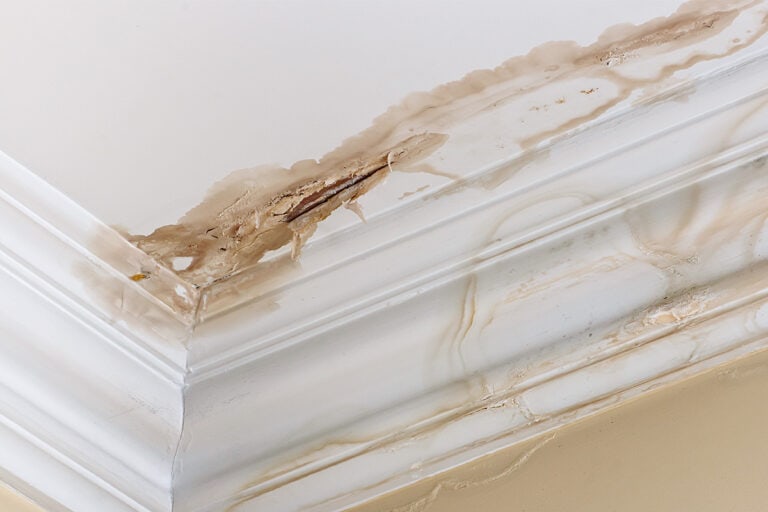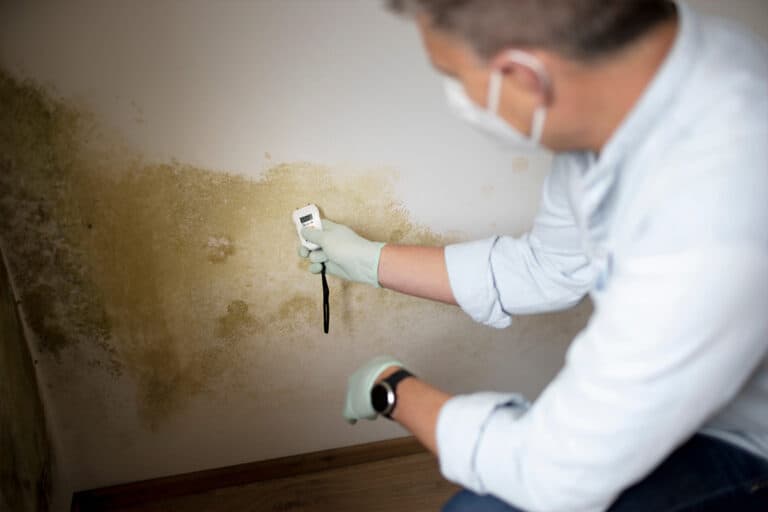Disclosure: I am compensated for purchases made through some links on this site. Click for details.
Water damage can strike when least expected, leaving a trail of destruction in homes and businesses alike. Whether it’s a burst pipe, a flooded basement, or the aftermath of a natural disaster, the effects can be devastating. As water seeps into the nooks and crannies of a structure, it threatens the integrity of buildings, the health of inhabitants, and the peace of mind of property owners.
The importance of timely water damage remediation cannot be overstated. Quick action not only salvages belongings but also curtails the damage that water can inflict over time. Delays can make the problem worse, leading to more significant repairs and increased costs. That’s why understanding the urgency of the situation, knowing the key terms, and taking the correct actions are vital in the aftermath of water-related incidents.
This comprehensive guide provides you with essential information on how to deal with water damage, outlining the process of water damage cleanup, and empowering you with knowledge to navigate this challenge effectively.
What is Water Damage Remediation?
Water damage remediation is a comprehensive process aimed at reversing the damage caused by water intrusion, restoring a property to its pre-loss condition. It is a meticulous process that involves water removal, decontamination, and drying of the affected areas. But it’s more than just addressing immediate damage; it’s about safeguarding a property from potential future problems, like mold prevention and structural weakening.
The objectives of water damage remediation are clear: to clean up the water, preserve and restore as much property as possible, and prevent long-term damage to the building’s structure and contents. The expected outcome is a safe, clean, and habitable environment, free from the risks associated with water damage.
It’s crucial to understand the distinction between remediation, restoration services, and repair. Remediation focuses on preventing further damage and addressing the existing effects, while restoration involves rebuilding and refurbishing the damaged areas to their original state. Repair, on the other hand, is the act of fixing specific damaged elements. Professional practices in water damage repair encompass a blend of these elements, ensuring that a property is not only fixed but also protected from similar incidents in the future.
Understanding Water Damage
Water damage is an all-encompassing term for the havoc wreaked by water in places it shouldn’t be. Common causes range from natural occurrences like heavy rainfalls and flooding to household mishaps such as leaky roofs, pipe bursts, or appliance malfunctions. Regardless of the source, the impact of water damage can be both immediate and progressive.
In the short term, water can cause visible destruction to walls, floors, and furniture. However, the long-term effects can be more insidious. Water can undermine structural foundations, promote mold growth, and result in persistent odors. The longer water remains unaddressed, the more likely it is to penetrate deeply, complicating the water damage assessment process and posing serious risks to structural stability and indoor air quality.
The Importance of Immediate Action
Time is of the essence when it comes to water damage. The longer water sits, the more it seeps into the porous materials of your home, creating a ripe environment for mold and bacteria, which can begin to grow in as little as 24 hours. Structural damage escalates as water undermines foundational supports, causes warping of wood, and leads to rusting of steel. Electronics can short circuit, and documents can be irreparably damaged within hours.
The financial implications are just as pressing. According to the Environmental Protection Agency (EPA), addressing water damage within the first 48 hours can significantly reduce the costs and the time required for remediation and repairs. The following table highlights key statistics surrounding the impact and response to water damage:
Table 1: Importance of Immediate Action
| Response Time | Impact on Costs | Secondary Damage Likelihood |
|---|---|---|
| Within 24 hours | Minimal increase | Low chance of mold and structural damage |
| 48 hours | Moderate increase | Increased chance of extensive repairs |
| 72+ hours | Substantial increase | High chance of mold, structural issues, and higher restoration costs |
Acting swiftly not only mitigates the severity of the damage but also helps in maintaining a healthier indoor environment, preventing the proliferation of allergens and pathogens.
Types of Water Damage
Not all water damage is equal. The source and content of the water play a crucial role in determining the remediation approach. The Institute of Inspection, Cleaning and Restoration Certification (IICRC) categorizes water damage into three types:
- Clean Water (Category 1): This type originates from sanitary sources and poses no substantial risk. Despite its benign nature, prompt water damage remediation is necessary to prevent escalation.
- Grey Water (Category 2): This type contains contaminants and requires immediate water damage cleanup to prevent illness or discomfort.
- Black Water (Category 3): This is the most severe, containing pathogenic agents and toxins, making flood damage restoration and sanitization paramount.
Professional remediation services are strongly recommended for Categories 2 and 3, due to the potential health hazards and the complexity of the remediation required.
Table 2: Categories of Water Damage
| Category | Description | Source | Implications for Remediation |
|---|---|---|---|
| Category 1 – Clean Water | Water that does not pose an immediate health threat. | Broken water lines, appliance malfunctions. | Easiest to remediate; minimal health risks. |
| Category 2 – Grey Water | Water that is contaminated and can cause illness or discomfort if ingested. | Sump pump failures, discharge from dishwashers or washing machines. | Requires additional sanitation measures; moderate health risks. |
| Category 3 – Black Water | Highly contaminated water that can contain harmful agents. | Sewage backup, flooding from rivers or streams. | Most complex remediation; significant health risks and may involve structural replacement. |
Step-by-Step Water Damage Remediation Process
When water damage occurs, a structured approach is essential to manage the situation effectively. Here’s a step-by-step guide to the water damage remediation process:
Assessment and Inspection
The first step in any remediation is to assess the extent of the damage. Professionals will conduct a thorough inspection using moisture meters and thermal imaging cameras to detect hidden pockets of moisture and to determine the scope of the impact.
Moisture Meters are used to measure the moisture content in various materials, giving a clear picture of the affected areas. Thermal Imaging Cameras utilize infrared technology to identify water without the need for destructive testing. Together, these tools enable experts to create a detailed remediation plan.
Water Extraction
Immediate removal of water is critical to prevent further damage. This is achieved through:
- Submersible Pumps: For high-level water, these pumps can transport large volumes of water quickly.
- Industrial Wet/Dry Vacuums: These are used for lower levels of water accumulation.
The choice of equipment depends on the water volume and the specific conditions of the site.
Drying and Dehumidification
After water extraction, the area must be dried and humidity controlled to prevent mold growth and further damage. This involves:
- Air Movers: These are high-powered fans that increase the evaporation rate from surfaces.
- Dehumidifiers: They remove excess moisture from the air to create an optimal drying environment.
These steps are crucial for restoring a safe moisture level in the property.
Cleaning and Sanitizing
All affected items and parts of the building need to be cleaned and disinfected. This includes:
- Antimicrobial Treatments: Applied to eliminate and prevent mold and bacterial growth.
- Air Scrubbers: Used to remove particles and contaminants from the air.
This phase ensures the property is not just visually clean but also hygienically safe.
Restoration and Repair
The final step is to restore the property to its pre-damage state. This can range from minor repairs, like painting and replacing carpets, to major ones like reconstructing entire rooms. The decision on restoration vs. replacement is based on:
- Extent of Damage: Sometimes it’s more cost-effective to replace than to repair.
- Historical Value: Older homes might require specialized restoration to preserve original features.
- Material Longevity: Materials compromised by water may not have a long remaining lifespan even after repairs.
Professional remediation services can navigate these decisions effectively, ensuring the most beneficial outcome for the property owner.
Table 3: Water Damage Remediation Process
| Step | Description | Time Frame | Notes |
|---|---|---|---|
| Initial Contact | The first step is to contact a professional remediation service for an emergency consultation. | Immediate | 24/7 availability is typical for emergencies. |
| Inspection and Assessment | Professionals assess the extent of the water damage and plan the remediation process. | 1-2 hours | This may involve using moisture detection equipment. |
| Water Removal | The removal of the majority of the water using pumps and vacuums. | Hours to Days | The time depends on the amount of water and the area’s size. |
| Drying and Dehumidification | Drying out wet materials, including flooring and walls, to prevent mold growth. | Several Days | Industrial dehumidifiers and air movers are commonly used. |
| Cleaning and Sanitizing | Cleaning all of the personal belongings affected by water damage, and disinfecting areas to prevent mold and bacteria. | Variable | This step may include fogging equipment for odor removal. |
| Restoration | The final step to restore the home to its pre-water damage condition, which may include minor repairs or major reconstruction. | Days to Months | The extent of damage significantly affects the timeline. |
Professional Remediation Services
When facing water damage, the complexity of the situation often requires the expertise of professional remediation services. These trained experts play a pivotal role, bringing specialized equipment and extensive experience to handle the nuances of water damage effectively.
The Role of Professional Services
Professional remediation teams are adept at:
- Quickly assessing the damage and developing a plan of action.
- Utilizing advanced technology for water extraction, drying, and moisture detection.
- Applying antimicrobial and antifungal treatments to prevent mold and bacterial growth.
- Coordinating with insurance companies to cover claims and costs.
- Ensuring that the remediation process adheres to industry standards and local regulations.
When to Call in the Experts
While minor water incidents can sometimes be handled without professional assistance, there are certain situations where calling in the experts is non-negotiable:
- When dealing with Category 2 (Grey Water) or Category 3 (Black Water) damage.
- If water has affected large areas or penetrated structural elements like subflooring and walls.
- When water damage has occurred in electrical areas, posing a risk of shock or fire.
- If mold growth has begun or if the environment could pose health risks.
Preventing Water Damage
Prevention is your first line of defense against the need for water damage remediation. By taking proactive steps, many incidents can be averted. Incorporating regular checks and maintenance into your routine can significantly reduce the risk of severe water damage. Here’s a checklist of regular maintenance and prevention tips:
Table 4: Water Damage Prevention Checklist
| Task | Frequency | Details |
|---|---|---|
| Monitor Water Bill | Monthly | Unexplained increases could indicate leaks. |
| Check Sump Pump | Quarterly | Ensure it’s operational to prevent basement flooding, especially before the rainy season. |
| Inspect roof | Biannually or after severe weather | Look for missing, damaged, or aging shingles. |
| Clean Gutters and Downspouts | Biannually (spring and fall) | Prevent blockages and water overflow. |
| Inspect Pipes and Faucets | Annually | Look for leaks, damage, or corrosion. |
| Inspect Appliances | Annually | Check hoses and connections on washers, dishwashers, etc. |
| Seal Windows/Doors | Every 2-3 years | Prevent water seepage from rain. |
The Cost of Water Damage Remediation
The cost factors for water damage remediation can vary widely, influenced by several factors:
- Extent of Damage: The size and severity of the area affected.
- Type of Water: Clean water is cheaper to handle than contaminated water.
- Location: Costs can be higher in areas that are difficult to access.
- Materials Affected: Some materials, like hardwood floors, are more expensive to replace or repair.
- Response Time: The longer water sits the more damage will occur.
Table 5: Cost Breakdown for Remediation Services
| Service | Average Cost | Description |
|---|---|---|
| Assessment | $150 – $400 | Initial inspection to determine the scope and impact of water damage. |
| Water Extraction | $500 – $1,500 | Removal of standing water using pumps and vacuums. |
| Drying & Dehumidification | $1,000 – $2,500 | Use of dehumidifiers and air movers to dry out the affected areas. |
| Cleaning & Sanitizing | $500 – $1,500 | Thorough cleaning of all salvageable materials and application of antimicrobial agents. |
| Restoration & Repair | $2,000 – $5,000+ | Repairing and reconstructing damaged areas to return to pre-damage condition. |
Understanding Insurance Coverage and Claims
Navigating insurance coverage for water damage can be complex. Most policies cover sudden and accidental damage, such as from a burst pipe, but may not cover gradual damage like a slow leak. Flood damage often requires separate flood insurance.
It’s essential to:
- Review your policy in detail to understand what is covered.
- Document all damage with photos and detailed notes.
- Report the incident to your insurance provider as soon as possible.
- Work closely with the remediation service, as they often have experience in dealing with insurance claims.
Table 6: Insurance Claim Process
| Step | Description | Tips |
|---|---|---|
| Report the Damage | Notify your insurance company immediately after discovering water damage. | Keep your policy number and contact information handy. |
| Document the Damage | Take photos and videos of the damage before any cleanup begins. | Document everything, no matter how small it seems. |
| Mitigate Further Damage | Take reasonable steps to prevent further damage, such as covering broken windows or stopping leaks. | Keep receipts for any materials you purchase for temporary repairs. |
| Fill Out Claim Forms | Complete all necessary paperwork provided by your insurance company. | Be thorough and provide as much detail as possible. |
| Adjustment | An insurance adjuster will visit your home to assess the damage. | It’s helpful to have a contractor present during the adjuster’s visit for a professional opinion. |
| Review Settlement Offer | Review the compensation amount proposed by the insurance company. | Don’t be afraid to negotiate if the offer doesn’t cover all your damages. |
| Complete Repairs | Once the claim is settled, begin the remediation and repair process. | Use reputable, licensed contractors to ensure quality repairs. |
| Keep Records | Maintain a file of all documents related to the claim and repairs. | This includes all correspondence with the insurance company and contractors. |
FAQs About Water Damage Remediation
Conclusion
The journey through water damage remediation can be challenging, but with the right knowledge and professional restoration services, it’s a path that leads to the restoration of normalcy and safety. Timely water damage assessment and repair are paramount in minimizing the impact and costs associated with water damage.
We’ve underscored the importance of immediate action, the benefits of professional water damage cleanup services, and provided insights into the costs and insurance aspects of water damage repair. Armed with this knowledge and a proactive approach to maintenance and mold prevention, property owners can navigate the aftermath of water incidents with confidence.
Remember, when it comes to water damage, the expertise of professional restoration services is invaluable. Don’t hesitate to enlist their help to ensure the best outcome for your water-damaged property.





